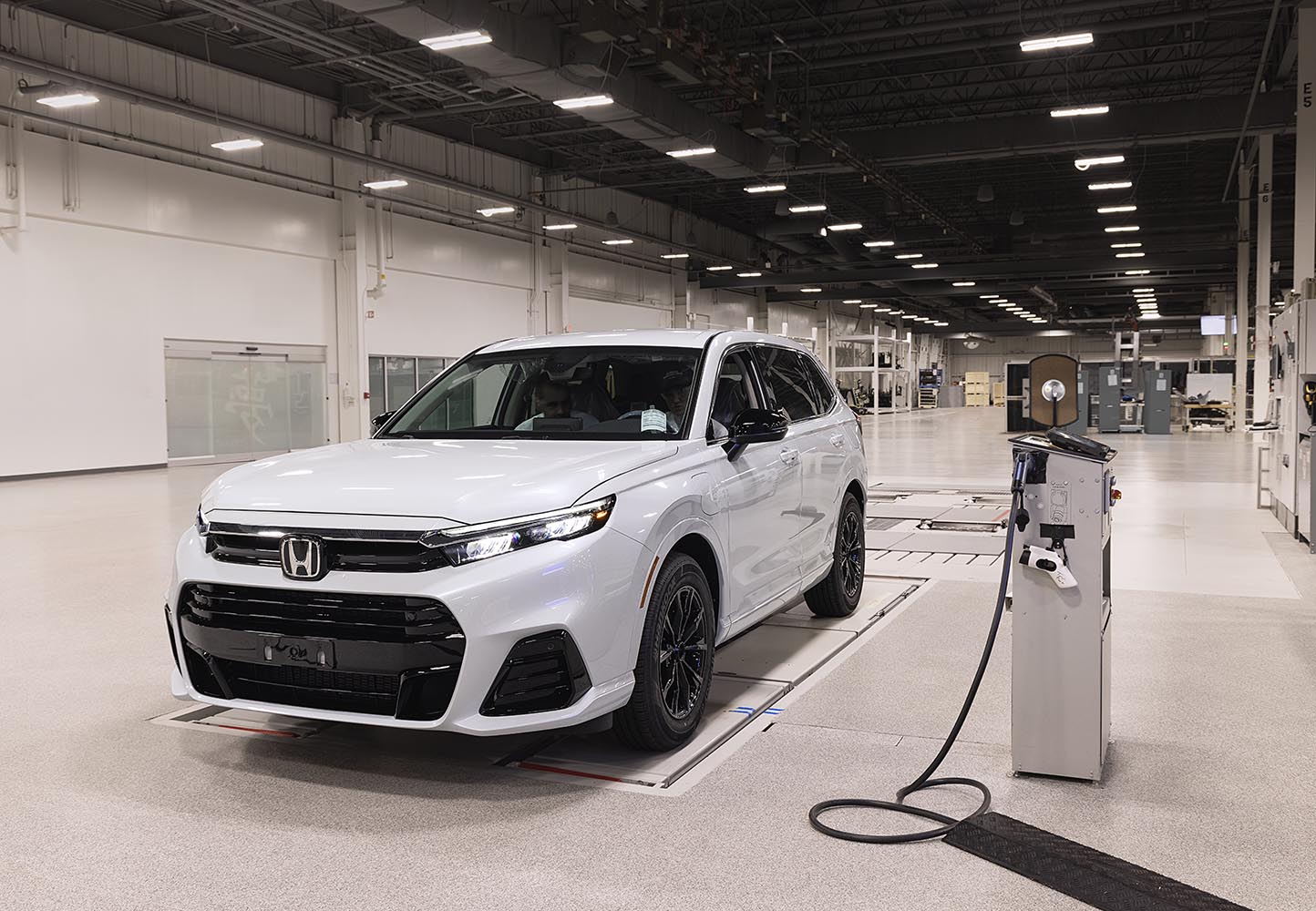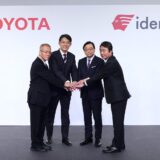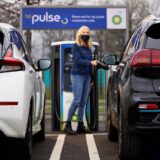
Honda starts production of fuel cell electric vehicle in Ohio
Japanese automaker Honda has taken a significant step forward in its hydrogen strategy with the commencement of production for the all-new 2025 CR-V e:FCEV, a fuel cell electric vehicle (FCEV), at its Performance Manufacturing Center (PMC) in Marysville, Ohio, U.S.A. This marks the only FCEV made in America and the first in the United States to combine a U.S.-made fuel cell system with plug-in EV charging capability.
The CR-V e:FCEV is a compact crossover utility vehicle (CUV) that boasts a 270-mile EPA driving range, combining a fuel cell system with plug-in charging to offer up to 29 miles of electric-only driving for short trips around town, and the convenience of fast hydrogen refueling for longer journeys. This production milestone aligns with Honda’s global goal of achieving carbon neutrality for its products and operations.
Patrick McIntyre, lead at PMC, highlighted the facility’s craftsmanship focus, which was initially established for building the Acura NSX supercar. “Producing a zero-emission fuel cell electric vehicle is one more step toward Honda’s global goal of achieving carbon neutrality,” said McIntyre.
The next-generation fuel cell system that powers the CR-V e:FCEV is also manufactured in the U.S.A., at the Fuel Cell System Manufacturing LLC in Brownstown, Michigan, a joint venture between Honda and General Motors (GM). This new system offers higher efficiency, increased refinement, double durability performance, and reduced costs by two-thirds compared to the previous system used in the Honda Clarity Fuel Cell.
Innovations at PMC for CR-V e:FCEV production
The transition from producing the Acura NSX to the Honda CR-V e:FCEV involved several key innovations:
- New Components: Technicians manage new assembly processes for the vehicle’s dual power sources, including the sub-assembly of hydrogen tanks, installation of the fuel cell system, and under-floor battery installation.
- New Weld System: The facility upgraded from an aluminum space frame welding system to a multi-material unibody construction, incorporating both robotic and manual welding techniques.
- Paint System Modifications: Adjustments were made to accommodate the larger steel body of the CR-V e:FCEV, including changes to the E-coat dip tank process and the sealer application system.
CR-V e:FCEV product highlights
Building on the legacy of the best-selling CR-V, the new e:FCEV version offers top-class cabin space, cargo capacity, and power. It features selectable drive modes, including an EV mode for efficiency and a Sport mode for enhanced acceleration and responsiveness. Refueling with hydrogen takes about the same time as filling a gasoline tank, and a Level 2 charger can recharge the vehicle in 1.8 hours for 29 miles of battery-powered range.
The CR-V e:FCEV also includes the Honda Power Supply Connector, which can power small home appliances, power tools, camping equipment, and even charge the new Honda Motocompacto e-scooter.
Honda’s broader hydrogen and electrification strategy
Honda’s hydrogen business strategy encompasses fuel cell electric vehicles, commercial vehicles, stationary power stations, and construction machinery. The company recently introduced a Class 8 Hydrogen Fuel Cell Truck Concept and began demonstration testing of a stationary fuel cell power station in California.
Honda aims to make battery-electric and fuel cell electric vehicles 100% of its new vehicle sales by 2040. The establishment of the “Honda EV Hub” in Ohio, alongside plans for an extensive EV value chain in Canada, underscores Honda’s commitment to a sustainable, electrified future.
Honda manufacturing in America
Honda has been producing automobiles in the U.S.A. for more than 40 years, with cumulative auto production exceeding 30 million vehicles. The company operates 12 manufacturing plants across the country, supporting more than 23,000 U.S. associates.














